Sailboat: A Comprehensive Guide
Table of contents
Introduction to Sailboats:
Hey there, fellow sea enthusiast! Ready to dive into the awesome world of sailboats? Well, you’re in for a treat! Our guide is all about sailboats – those cool vessels that ride the waves powered by the wind. We’re here to break it down for you, whether you’re a total newbie or a salty old sailor. From the hull that keeps things afloat to the ropes and sails that catch the breeze, we’re exploring it all. So, get ready to set sail on a journey of discovery as we dive into the history, types, and everything you need to know about sailboats.

What is a Sailboat:
A sailboat is a charming watercraft that relies on the power of the wind to move gracefully across the water. Picture this: a vessel with elegant sails catching the breeze, propelling it forward in a harmonious dance with nature. It’s like nature’s own eco-friendly mode of transportation, combining adventure and sustainability. Sailboats come in various sizes and styles, from sleek racing yachts to cozy cruisers perfect for leisurely exploration. So, in essence, a sailboat is a beautiful fusion of wind, water, and human ingenuity, offering a delightful way to navigate the open seas and experience the joys of sailing.
Brief History of Sailboat:
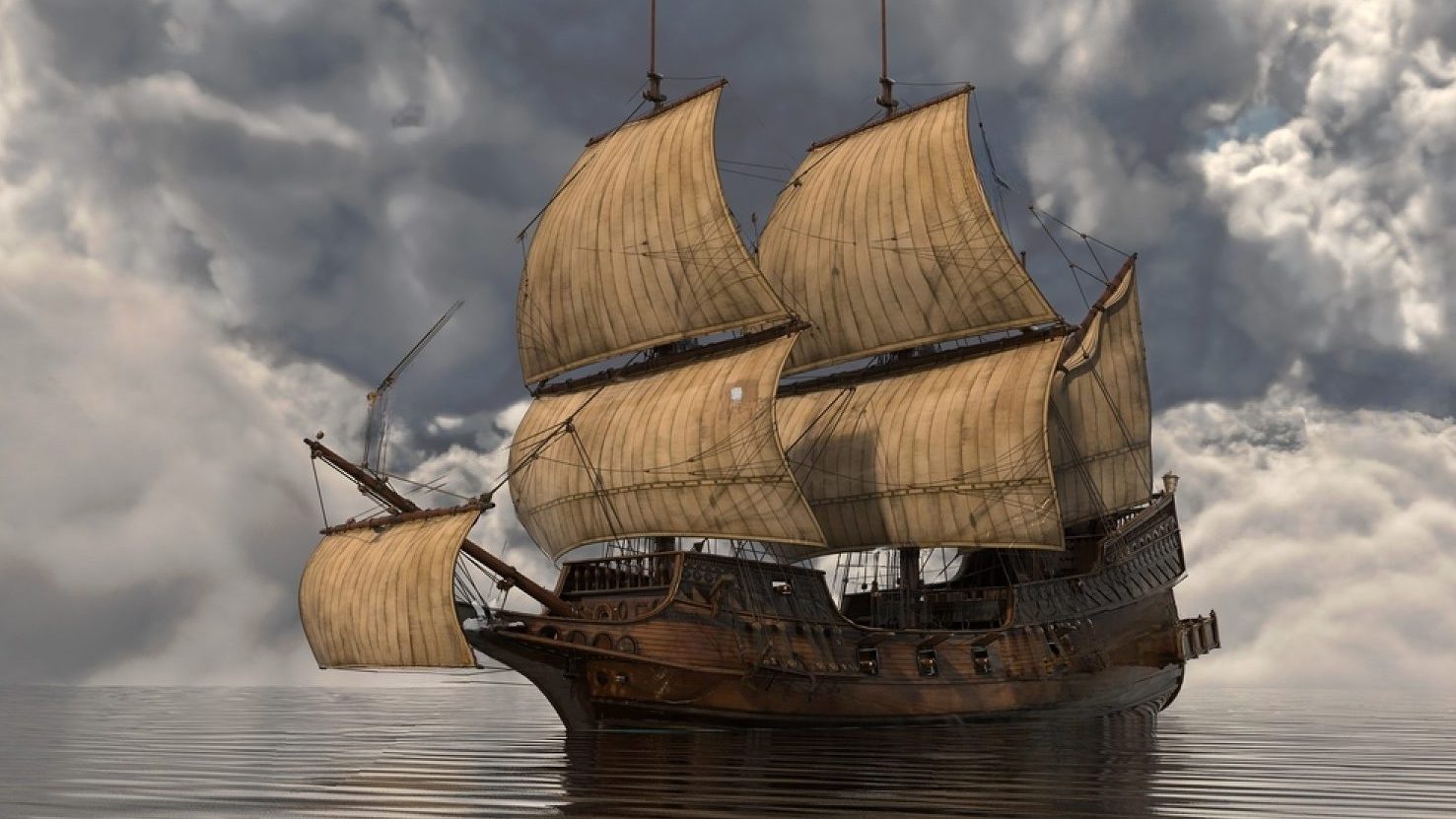
The roots of sailboats trace back to ancient civilizations, where early sailors harnessed the wind’s power for navigation. Over the centuries, sailboat designs evolved, from the majestic tall ships of the Age of Exploration to the sleek racing yachts of modern times. These vessels played pivotal roles in maritime trade, exploration, and even warfare.
Types of Sailboats:
- Sloop: A single-masted sailboat with a main sail and a jib, known for its simplicity and versatility.
- Cutter: Similar to a sloop but with an additional foresail, offering enhanced maneuverability.
- Ketch: Featuring two masts, a main mast, and a shorter mizzen mast, for better balance and control.
- Yawl: With a shorter mizzen mast placed aft of the rudderpost, ideal for cruising and ease of handling.
- Catboat: Characterized by a single mast set far forward, typically with a single sail.
- Dinghy: Small, open sailboats often used for racing, training, or recreational sailing.
- Cruiser: Designed for comfortable long-distance sailing, offering ample amenities and storage.
- Racing Yacht: Built for speed, equipped with advanced sail configurations and lightweight materials.
- Windjammers: The windjammer is a majestic and historical type of sailboat that played a significant role in maritime trade and exploration during the 19th century.
Anatomy of a Sailboat:

A sailboat’s anatomy is a symphony of components, from the mast and sails catching the wind to the keel ensuring stability, all working together to create a graceful and efficient vessel that navigates the waters with the artful dance of sailing.
Hull and Deck:
Central to a sailboat’s architecture are its hull and deck. Just like any other part of the ship, the hull, the vessel’s main body, ensures stability and buoyancy, directly influencing performance. Its design impacts speed, maneuverability, and overall seaworthiness. Complementing this, the deck serves both as a shield, safeguarding interiors, and a versatile platform for activities. From steering to relaxation, it’s a multifunctional space.
Sails and Rigging:
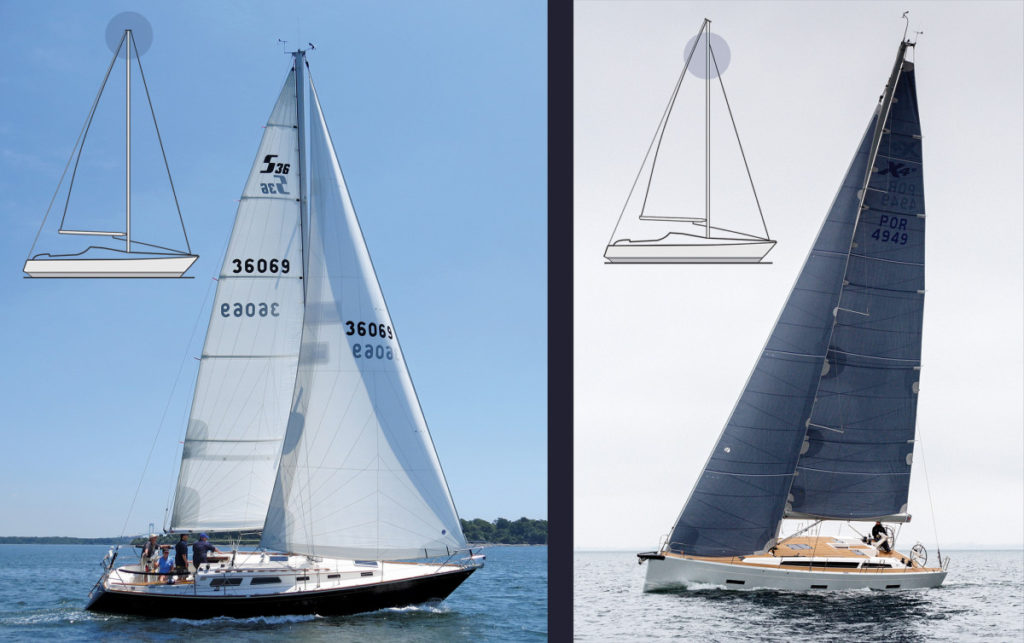
In the world of ships, sails and rigging used to be the dynamic duo. Sails caught the wind and moved the ship, while rigging, made of ropes, steered and adjusted the sails. It was like a dance on water – when you changed one thing, it affected the other. Even though modern ships don’t use sails much, the importance of knowing how to handle ships hasn’t changed since the old days. If you want to learn about ship handling, pursuing G.P. rating is a great idea. That’s how you can get the know-how about ships, blending the old and the new, and keeping the tradition of sailing alive.
Want to know more about G.P. Rating CLICK HERE:
Keel and Centerboard:
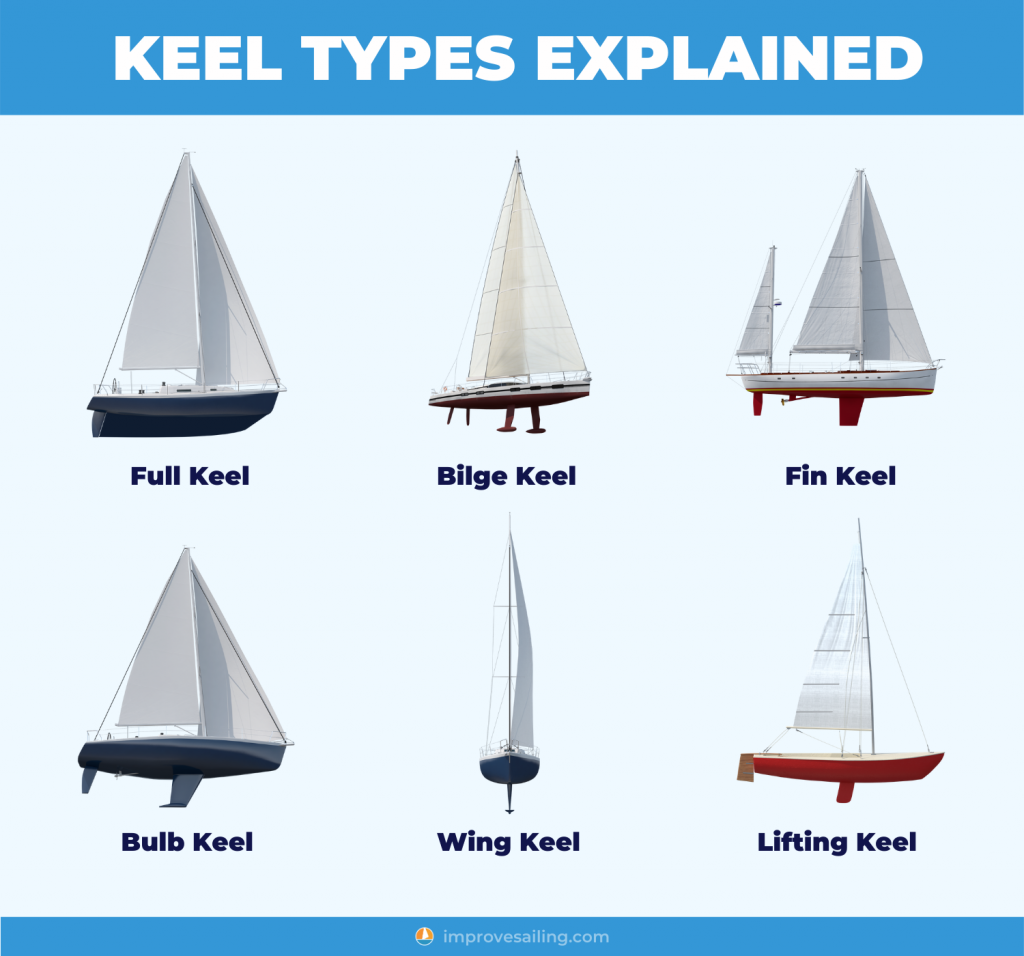
Essential to a sailboat’s stability and maneuverability, the keel and centerboard are key players. The keel, a fixed fin beneath the boat, balances and aids control. Meanwhile, the centerboard, retractable and adjustable, counters drift and improves upwind sailing. These components ensure a steady and responsive sailboat, whether cruising or tacking against the wind, enhancing the art of sailing on the open waters.
Steering and Controls:
Steering and controls are like a sailboat’s best friends, working together to guide its journey. The helm, or steering wheel, responds to the captain’s touch, while the controls adjust the sails, catching the wind’s playful whispers. It’s a dance of harmony between sailor and sea, where small actions steer big adventures. So, whether you’re gently gliding or chasing the wind, mastering steering and controls adds the magic touch to your sailboat escapades.
Sailing Basics:
Learn to harness the wind’s power, navigate points of sail, trim sails, and master steering and controls. From understanding sail rigging to perfecting tacking maneuvers, our guide to sailing basics provides essential skills for confidently navigating the open waters and enjoying the art of sailing.
Understanding Wind and Sail Trim:
Understanding how the wind interacts with the sails is pivotal for optimizing performance.Discover the nuances of adjusting sail angle and tension to catch the wind’s energy effectively. Whether you’re a novice or seasoned sailor, mastering sail trim on a sailboat is an art that enhances maneuverability and speed.
Points of Sail in a Sailboat:

“Points of Sail” in a sailboat refer to specific angles at which the boat can sail in relation to the direction of the wind. These angles determine how the sails are set and how the boat moves through the water. There are different points of sail, including:
- Close-Hauled: Sailing as close to the wind direction as possible, usually at a 45-degree angle. This is the point of sail closest to sailing directly upwind.
- Beam Reach: Sailing perpendicular to the wind, with the wind coming from the side of the boat. This point of sail allows for efficient and balanced movement.
- Broad Reach: Sailing at an angle between beam reach and running downwind, with the wind coming from behind the boat. This point of sail is often used for downwind sailing.
- Running: Sailing directly downwind, with the wind coming from behind the boat. This is the fastest point of sail but requires careful control.
Understanding the points of sail is essential for sailors to navigate effectively and make the most of the wind’s power for optimal performance and enjoyment while sailing.
Tacking and Jibing:
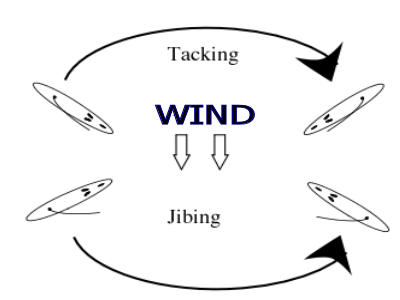
In the world of sailing, tacking and jibing stand out as crucial moves to change course according to the wind. Tacking means turning the front of the boat through the wind, while jibing turns the back. Both actions demand careful changes in the sails and steering to stay in control and steer effectively. These skills are vital for sailors, as they help in skillfully catching the wind’s angles and finding the best route while navigating the waters smoothly.
Interestingly, a similar sense of excitement and control can be found in handling modern cargo ships and traditional sailing boats. Just like in sailing, being at the helm of a massive cargo ship requires skill and precision to maneuver. If you’re seeking that same thrill and responsibility, considering a career by pursuing DNS(Diploma in Nautical Science) could be the way to go. This role puts you in charge of guiding the ship, blending the exhilaration of sailing with the practicalities of modern maritime navigation.
Give wings to your career by applying in top colleges for DNS.
Knots and Nautical Terms:
Knots refer to techniques for securing ropes, vital for various tasks like rigging and docking. Nautical terms are specialized expressions aiding communication and navigation at sea, ensuring smooth teamwork and safe maneuvering. Proficiency in knots allows effective sail and equipment management, while understanding nautical terms enhances coordination and safety.
Sailboat Maintenance and Care:

“Sailboat Maintenance and Care” encompasses routine inspections, cleaning, and servicing of hull, rigging, sails, engine, and systems. Preventive measures safeguard performance and longevity.
Inspecting and Repairing Rigging:
“Inspecting and Repairing Rigging” involves a thorough examination of a sailboat’s intricate network of ropes and cables that comprise its rigging. This process identifies signs of wear, corrosion, or damage that can compromise safety and performance. Repairs include replacing worn components, ensuring proper tension, and maintaining connections. Regular rigging inspection and meticulous repairs are essential for a sailboat’s structural integrity, stability, and efficient sail handling.
Hull Maintenance and Anti-Fouling:
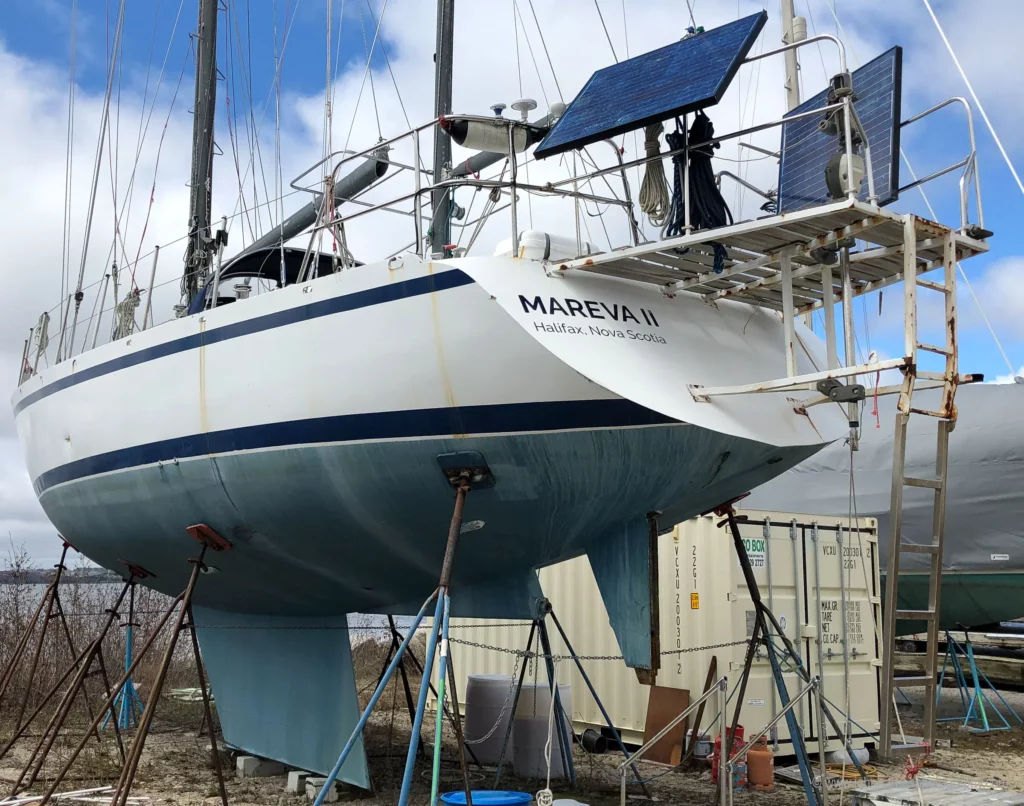
Hull maintenance and anti-fouling are like a spa day for your sailboat! The hull, the boat’s outer skin, needs love too. Regular cleaning, smoothing, and applying anti-fouling paint keep it smooth and free from underwater growth like barnacles. This not only keeps your sailboat looking sleek but also boosts its performance by reducing drag.
Winterization and Storage:
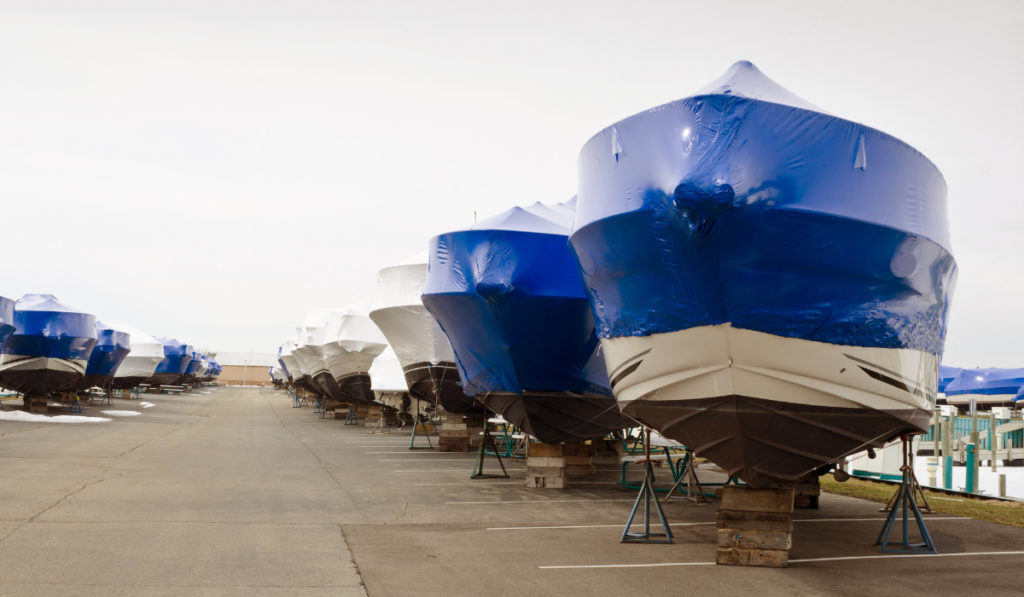
Winterization involves draining water systems, protecting engines from freezing, and safeguarding equipment from harsh conditions. Once winterized, finding the right storage spot is crucial. Whether it’s a dry dock, boatyard, or covered space, proper storage shields your sailboat from the elements. Think of it as tucking your boat in for a snug nap, ensuring it’s ready to set sail again in pristine condition come spring. Proper winterization and storage keep your sailboat safe and sound, ready to embark on new adventures when warmer days return.
Navigation Aids and Charts:

“Navigational Aids and Charts” play the role of your sailboat’s trusty GPS and adventure map. Just like how road signs and colors guide you on land, navigational aids like buoys, lighthouses, and markers guide you through the waters with their own signals and colors, making sure you sail safely. And what’s a journey without a cool map? Nautical charts are like treasure maps, showing you the depths of the water, cool landmarks, and potential trouble spots.
And if you’ve ever dreamt of riding those big waves and navigating the high seas, why not consider diving into a DNS ? It’s like becoming a sea captain, mastering these skills, and turning your love for sailing into an exciting adventure on the open water.
Safety Equipment and Procedure:
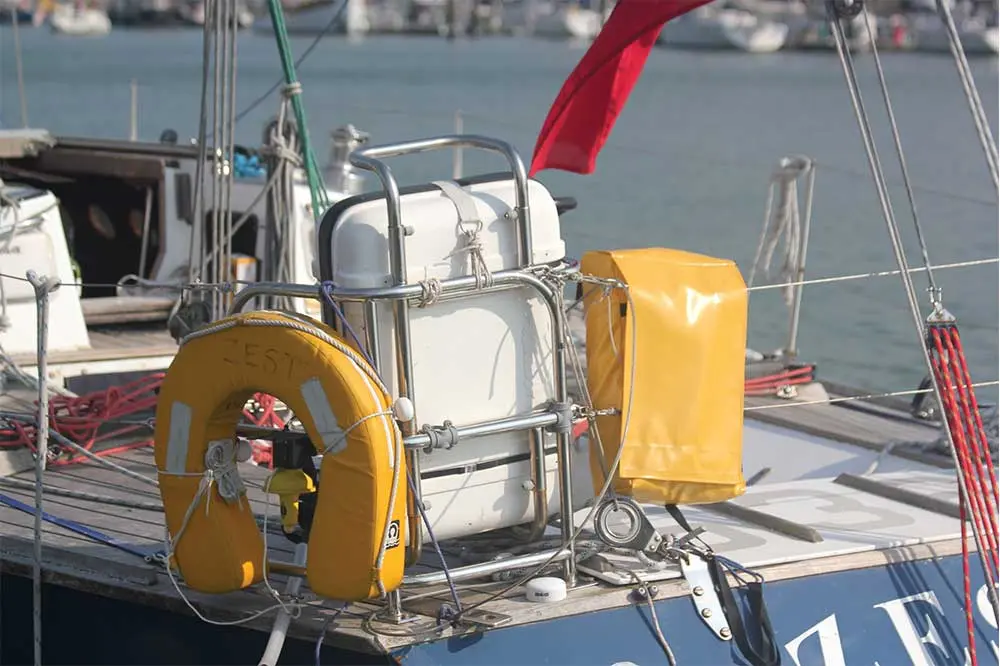
These encompass a range of essential gear and protocols designed to ensure safety at sea. From life jackets and fire extinguishers to emergency flares, they’re the first responders in times of need. Equally crucial are well-defined procedures for emergencies, like man overboard situations or fires.
Weather Consideration:
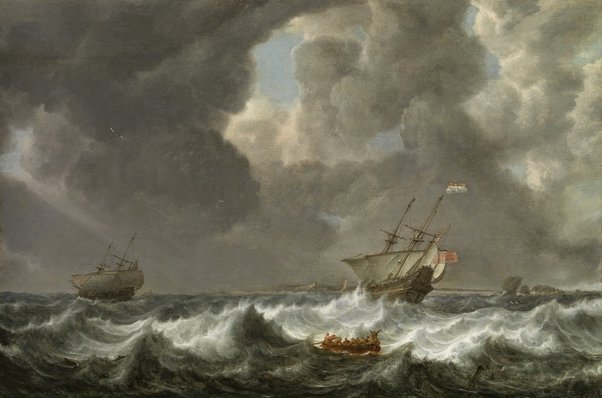
They encompass a range of meteorological factors that impact sailing conditions, safety, and overall experience. Wind speed, direction, and shifts determine sail choice and maneuvering strategies. Wave height and sea state affect stability and comfort. Weather forecasts, charts, and radar keep sailors informed, aiding route planning and avoiding storms. Understanding weather patterns and knowing when to set sail or seek shelter are vital for successful voyages.
Advanced Sailing Techniques:
The advancement of sailing boats has been a remarkable journey of innovation and evolution. From ancient vessels using rudimentary sails to today’s cutting-edge sailboats, technology has propelled the sport to new heights. Materials like lightweight composites enhance performance, while advanced sail designs optimize efficiency. Modern navigation tools, from GPS to weather forecasting, revolutionize seamanship. Hydrodynamic research refines hull shapes for improved speed and stability. As technology charts new horizons, sailing boats embody human creativity, igniting a world of thrilling potential on the open waters.
Disclaimer :- The opinions expressed in this article belong solely to the author and may not necessarily reflect those of Merchant Navy Decoded. We cannot guarantee the accuracy of the information provided and disclaim any responsibility for it. Data and visuals used are sourced from publicly available information and may not be authenticated by any regulatory body. Reviews and comments appearing on our blogs represent the opinions of individuals and do not necessarily reflect the views of Merchant Navy Decoded. We are not responsible for any loss or damage resulting from reliance on these reviews or comments.
Reproduction, copying, sharing, or use of the article or images in any form is strictly prohibited without prior permission from both the author and Merchant Navy Decoded.

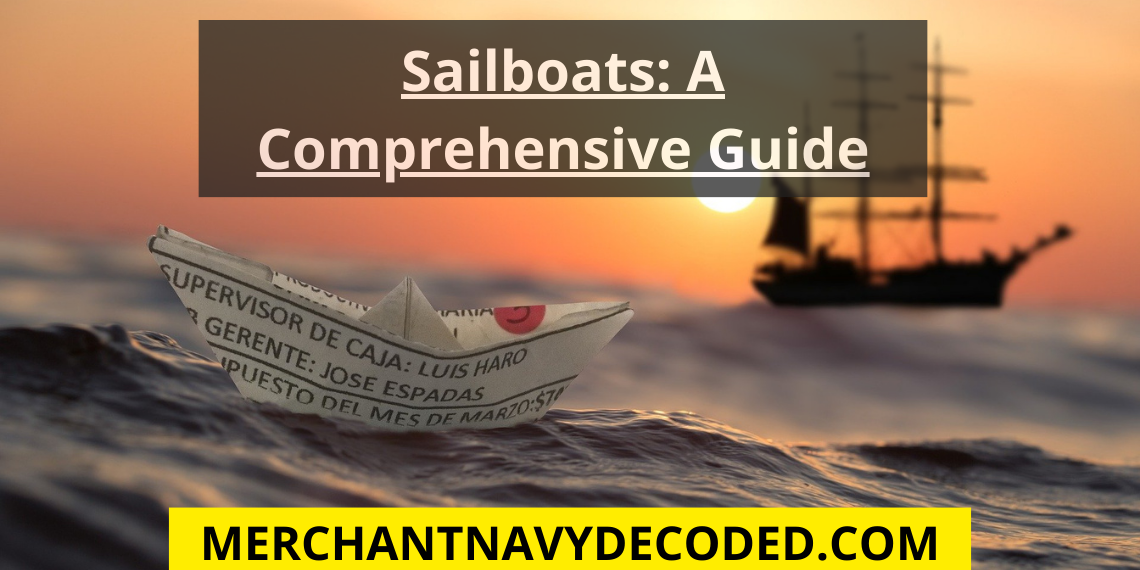


One of the best and helpful article